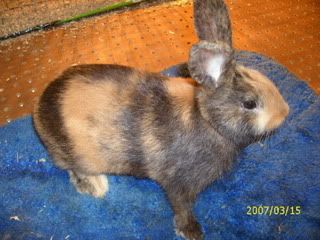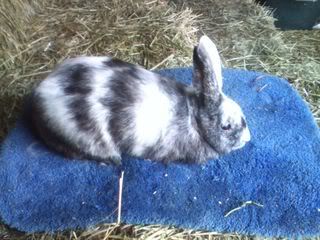bunnylover78642
Well-Known Member
Sr. Bucks - 6 months of age or over, weight 6 1/2 - 9 lbs. Ideal weight 7 1/2 lbs.
Sr. Does - 6 months of age or over, weight 7-9 1/2 lbs. Ideal weight 8 lbs.
Jr. Bucks - under 6 months of age, not over 7 1/2 lbs. Min weight 3 3/4 lbs.
Jr. Does - under 6 months of age, not over 8 lbs. Min weight 3 3/4 lbs.
Groups: Japanese, Magpie (judged together)
Varieties: black, blue, chocolate & lilac
PICTURE FROM- 3 Rabbits and Alkinar Rabbitry
Black Japanese
Sr. Does - 6 months of age or over, weight 7-9 1/2 lbs. Ideal weight 8 lbs.
Jr. Bucks - under 6 months of age, not over 7 1/2 lbs. Min weight 3 3/4 lbs.
Jr. Does - under 6 months of age, not over 8 lbs. Min weight 3 3/4 lbs.
Groups: Japanese, Magpie (judged together)
Varieties: black, blue, chocolate & lilac
PICTURE FROM- 3 Rabbits and Alkinar Rabbitry
Black Japanese






